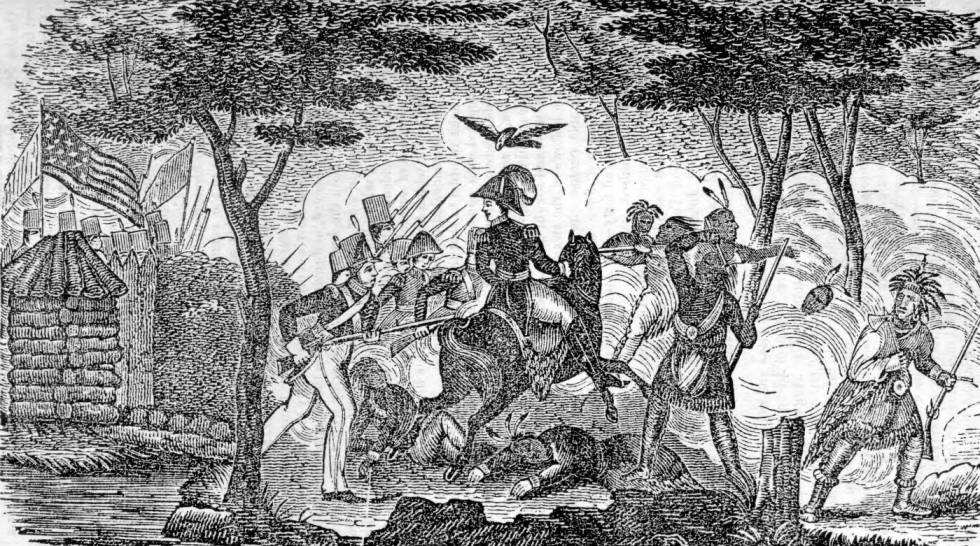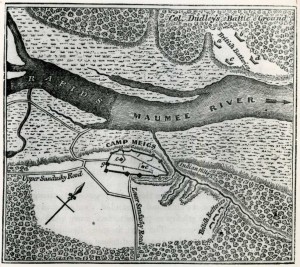Siege of Fort Meigs

Since last year, Ohio has been celebrating the bicentennial of the War of 1812 and our state’s role in this important historical event. Early May is a notable time in the story of the war, as it marks the 200th anniversary of the first Siege of Fort Meigs, a bloody conflict that served as a key turning point for American forces.

Fort Meigs was a strategic fortification along the banks of the Maumee River in present-day Perrysburg, Ohio.Construction on the fort began in February 1813 with the intention of creating a base from which to invade Canada, but it was soon changed to a defensive checkpoint to prevent any further British advances into American territory. Upon its completion in April of the same year, the installation contained seven blockhouses used for defense, five artillery batteries, two storehouses, and had approximately twenty artillery pieces to help defend the fort.
It was a major target for British troops and their Native American allies, who attacked it twice in an effort to either capture or destroy the fortification. The sieges, in May and July of 1813, led to many American casualties, but U.S. troops managed to maintain possession of the fort and thwart British plans. It was these two victories at Fort Meigs that helped to turn the tide in the western theater of war in favor of the American forces.

After the second siege, the fort was torn down and replaced with a smaller-scale supply depot which stood through the war, but later burnt down. The Ohio Historical Society reconstructed the fort in the 1970s, with renovations in 2003, and today this National Historic Landmark stands as the largest reconstructed, wooden-walled fort in the United States. The blockhouses, artillery batteries and numerous earthworks appear much as they did during the summer of 1813, and exhibits in the blockhouses present the life of a soldier, the building of the fort and dramatic accounts of the two sieges against the fort.
Learn more about the Fort Meigs site in Perrysburg, or visit Ohio Memory to explore the digital materials related to this important piece of military history!
Thanks to Lily Birkhimer, Digital Projects Coordinator at the Ohio History Connection, for this week’s post!



Leave a Reply
You must be logged in to post a comment.